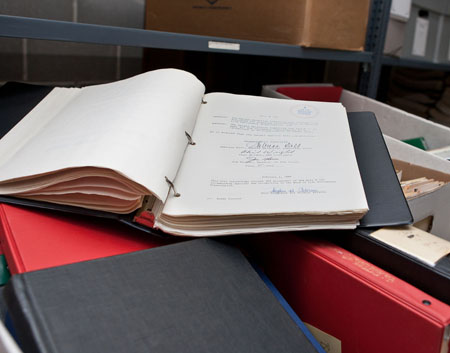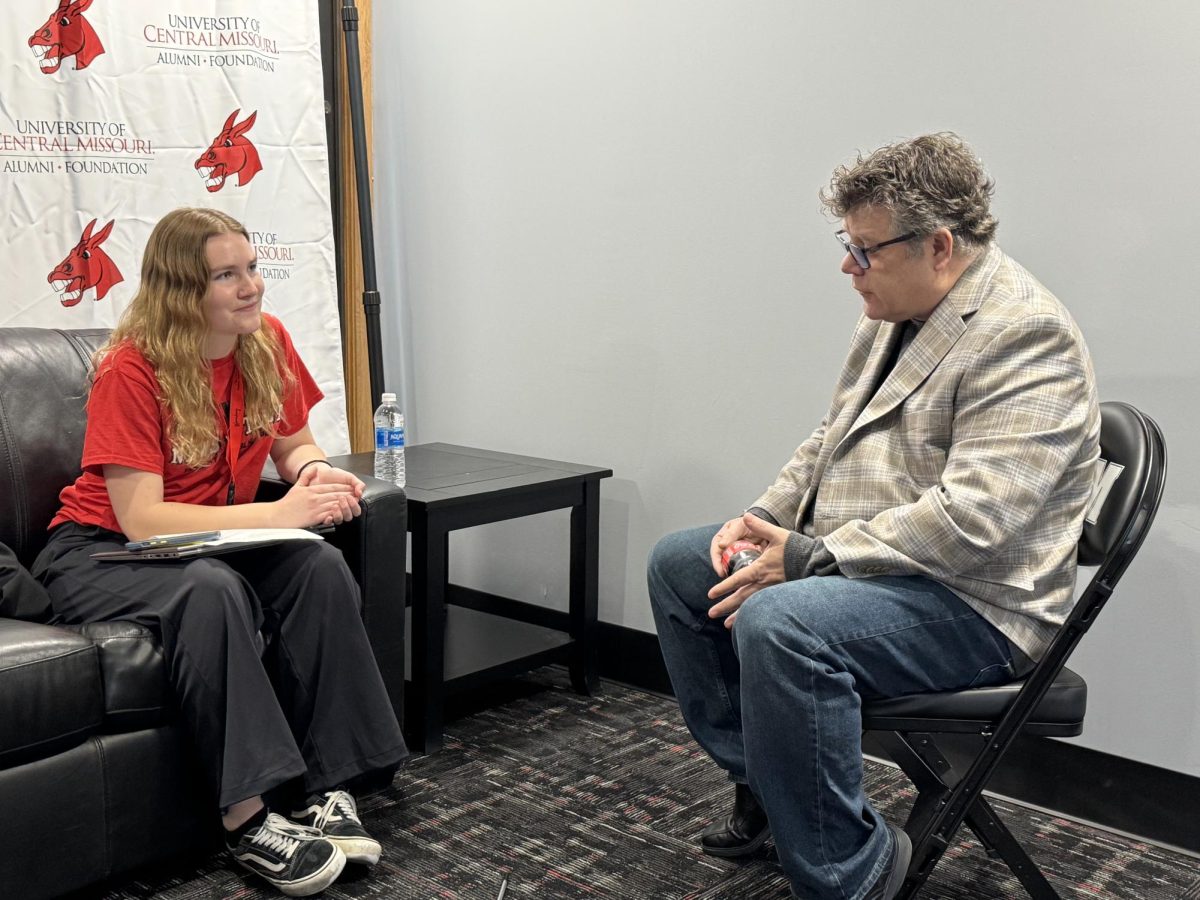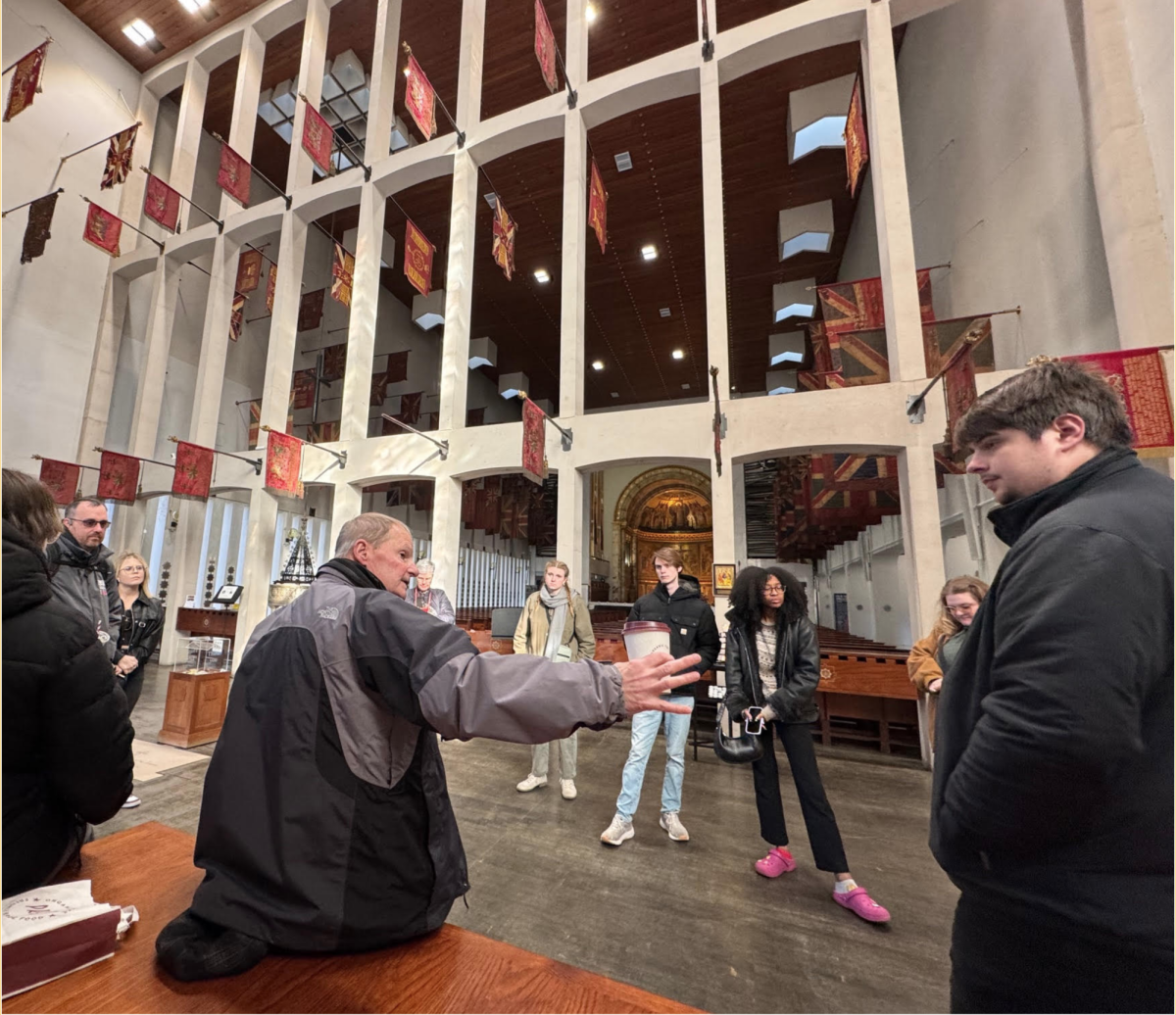
Story by KRISTIN GALLAGHER, Business Manager—
The University of Central Missouri’s Student Government Asscociation was allocated $34,400 of student money through student activity fees during the 2012-2013 school year.
But if someone inquires what that money was spent on, it may take weeks to figure it out.
The steps necessary to acquire budget and spending documentation for SGA is convoluted due to a lack of organization and communication between SGA members and advisers.
The process for acquiring such information may go something like this:
Step one: Contact the group’s adviser.
Beth Rutt, director of Student Activities and SGA co-adviser, is the direct point of contact for questions about the organization. With numerous positions across campus and back-to-back daily meetings, Rutt is hard to catch.
As an adviser, it is her job to direct people to members of SGA for answers in an effort to let the organization act on its own. Thus, the secretary is the point person for budget documentation.
Step two: Contact the SGA secretary
Due to a switch in secretaries from the fall 2012 semester to the spring 2013 semester, SGA’s secretary for the spring semester, Amanda Holloway, did not have any legislation prior to that semester and little knowledge of where to obtain budget information.
Holloway said past legislation documents and budget information was sent to the university archives in the James C. Kirkpatrick Library by a previous SGA president.
Step three: Visit the student library
Jerry Brown, associate professor at the library, is the first stop in hopes of finding the archived SGA budget material.
During a visit by a Muleskinner reporter, Brown called the McClure Archives and University Museum on the main floor of the library to see if any SGA documents were dropped off.
With a shake of her head and the click of her phone, she reported that there was no record of any SGA documentation in the archives.
“This should be public information, open to anyone,” Brown said. “I would go talk to someone in Student Experiences and Engagement and let them know the trouble in finding this information.”
Step four: Visit Student Experience and Engagement
Gretchen Reynolds, administrative assistant for student engagement and the contact given by the SGA secretary, can provide an itemized budget for SGA for the past three years.
These papers provide general expenses from the organization, such as $207.68 spent at Office Depot in September 2010, and $2,408.20 spent at the University Store in August 2012 for T-shirts.
However, the numbers do not accurately reflect the beginning and ending balance of the group per semester.
The fees left over after each year do not roll over in the fall, but are redistributed to other student groups.
“The numbers can be quite confusing,” Reynolds said. “It is all part of a formula they use to figure out what SGA gets each semester. But on average, SGA gets about $15,000 a semester to spend on things outside of salaries.”
The formula she mentioned is used to divide up student fees between other groups involved in student activities such as Spotlight, Late Night Programming and Sports Clubs. SGA is allotted 10 percent of the student fees after figuring salaries of the paid positions within the student activities department.
Step five: Visit Rutt again to go over itemized budget and find documentation of SGA’s past budgets and expenses
Since the itemized budget only references where the money was spent rather than what the money was spent for, there is no direct link to why SGA was spending that money. Rutt can remember almost every big expense – from the $2,408.20 T-shirt purchase for events to the $6,865 spent in July 2010 on an electronic clicker system for voting.
Still, this is the only form of documentation readily available for such expenses. She notes that the SGA fall and spring semesters’ budget information is made public through MyCentral.
Step six: Visit MyCentral for SGA budget information
In MyCentral, there is a “groups” tab that allows students to join and interact with any groups they may be affiliated with through the portal.
SGA is a restricted group, so a student is required to request access to the group’s information before he or she can view it.
If someone sends a request, odds are that it is still pending, as the members of SGA are unsure of how to operate the system and have not updated that information in quite some time, Rutt said.
Step seven: Visit the archives again
Since Rutt was certain there are SGA records in the archives, another visit to the McClure Archives was necessary.
With some luck and talking to the right person, the documents are located and wheeled up from the basement.
There are three long boxes full of old papers and multicolored, three-ring binders layered with dust.
Inside the boxes, the most recent binder dates back to 2008-2009, leaving a five-year gap between it and the current school year.
Step eight: Meet with newly elected SGA president
Christina Parle, the incoming president, provided the Muleskinner reporter with pieces of legislation from the spring 2013 semester that account for most of SGA’s spending.
However, these items do not add up to the full $18,700 that was allotted. In fact, it is about $9,400 short.
— $1,200 for transportation and lunch for students to attend a trip to the state capital.
— $2,000 to help build a sidewalk on King Street for students to safely walk or ride their bikes.
— $3,000 for the construction of a staircase in place of the trail on the west side of Nickerson Hall.
— $2,000 for non-perishable groceries to start an on-campus food pantry (and $1,000 every semester after).
And finally, $1,156.37 for a laptop to help keep better records.
Part of that remaining $9,400 was allotted for office supplies and refreshments for events. However, only $1,772.35 is listed for these items in the budget report as of April 10, 2013. Plus, $4,475 was budgeted for salaries for paid SGA positions, still leaving $3,152.65.
Both Rutt and Shari Bax, vice provost of Student Experience and Engagement and co-adviser for SGA, confirm that if there is a leftover balance from these funds in the spring, it will be put back into student activity fees to be divided up again for the next year, of which SGA will get a fraction.
Each fall, SGA posts its budget for the beginning of the school year on its office door, but that budget is rarely updated.
And when someone does wish to see it, there is a scramble of people trying to get it together at the last minute.
“All of these records and legislation should be in the SGA office,” Rutt said. “The problem is the SGA office is kept by the secretary and they have had two this semester. I have never had any problems getting people this information before…This is student money and they should know how it is utilized and spent. Transparency is very important.”
And with a lack of past documents and records, it seems that this transition in student positions within SGA may be creating an ongoing problem.
“Good government should always include a public recognition of spending,” Bax said. “But the group is always in constant transition of members. I have advised many organizations on campus and that is a problem that has plagued many of them. There is no longevity or follow-through because of it, and it is a persistent problem no matter what quality of leadership you have.”
The constant transition of documents between members from year-to-year, or even semester-to-semester, has hindered SGA’s ability to establish a strong organizational structure for record keeping, but the question is why there was no organizational structure to begin with.
“This is something we have talked about before from time-to-time,” Bax said. “This isn’t something we have a solution for yet.”
But Parle has high hopes and big plans for SGA and the upcoming school year.
“As frustrated as some people are with this, so am I,” she said when asked about the lack of organizational structure. “Presidents before me were very unorganized, and I plan to change that.”
So, after an eight-step process of tracking down sources and retracing steps, there is documentation of what SGA is spending student money on, but it was a long process to obtain it and it is confusing to interpret.
“Historically, SGA has not been good at publicizing or making publicly known what they do,” Bax said. “But they are just students. We have to remember that. They are just learning.”
Categories:
Where does the student activity fee go?
Written by Muleskinner Staff
May 2, 2013
0






